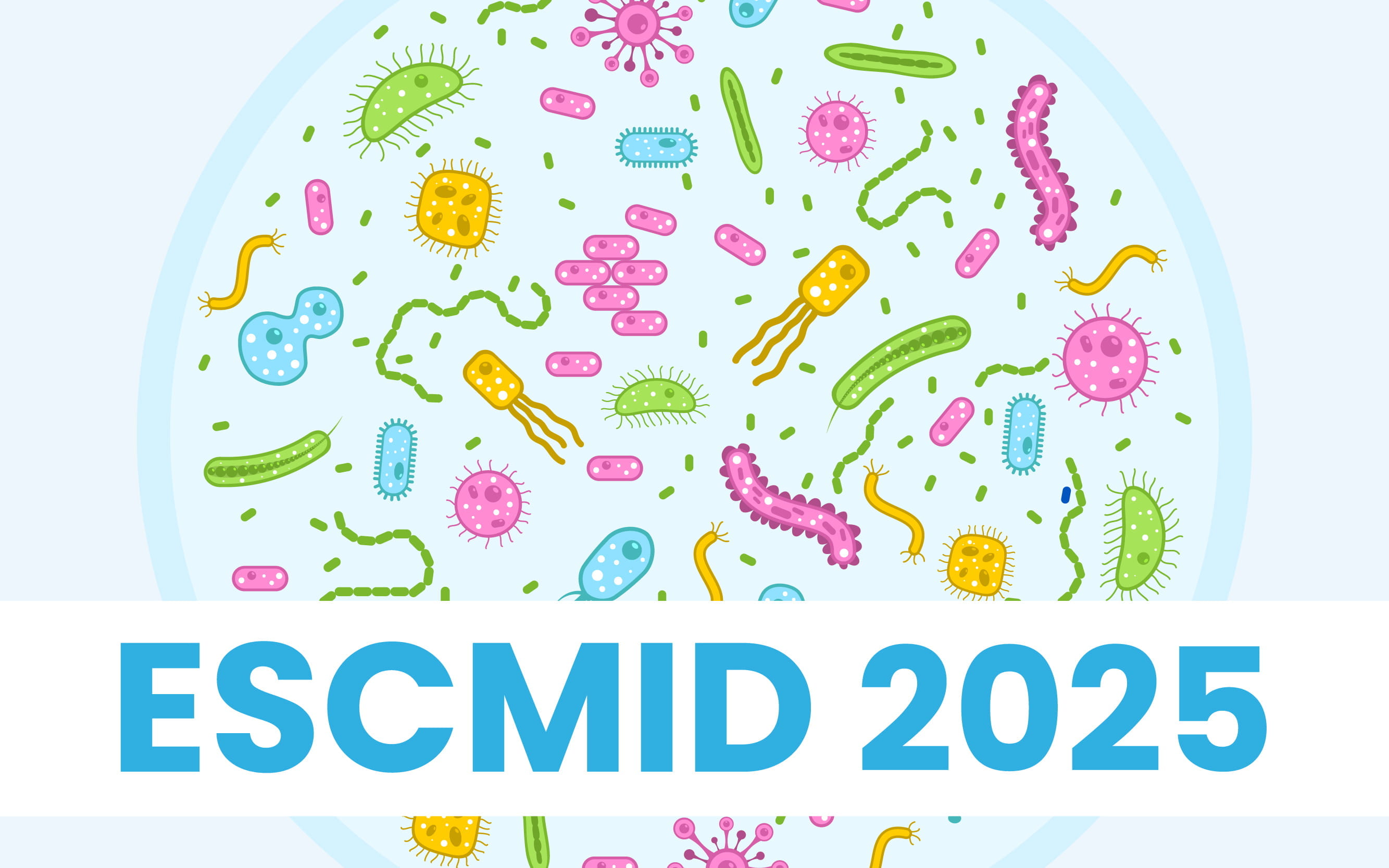ESPID 2023: Immune Responses to Infections in Early Life
Early life, particularly the neonatal period, is crucial for infant immunological development. Neutrophils, important in the immune response, have limited functionality in neonates, which can lead to difficulties in fighting infections. Del-1, a protein, shows promise in regulating excessive tissue infiltration and inflammation and promoting the release of neutrophil progenitors from the bone marrow during infection. Recent studies aim to investigate Del-1's role in regulating tissue infiltration and susceptibility to infection, particularly regarding neutrophil kinetics. The main question being investigated is whether the molecule Del one plays a role in regulating tissue infiltration and susceptibility to infection in early life, particularly in relation to neutrophil kinetics. Experimental studies using murine models and human neonates with sepsis in the ICU showed that Del-1 protein levels are higher in neonates and decrease as they age. The cytokine response in sepsis differs between young hosts and adults. In septic neonates, a high IL-10 to IL-17 ratio correlates with increased Del-1 levels. Knockout mice lacking the DEL-1 gene had worse survival in sepsis, but administering recombinant DEL-1 protein improved survival. Human neonates with sepsis and higher DEL-1 levels exhibited lower mortality. In human studies, the Del-1 protein increases neutrophil count in septic neonates, regulating neutrophil levels in the blood. Understanding immune regulation in early life is important for patient management. The balanced neutrophil response is crucial to avoid tissue harm. Proteins like Del-1 could serve as prognostic and therapeutic factors for sepsis in young individuals.
This session focuses on developing antigen-specific B cell responses following infant vaccination. After birth, lymphocytes massively increase in the early weeks and gradually decline to adult levels within the first few years. Memory B-cells (MBCs) are generated in secondary lymphoid organs. Antigen presentation to naive B-cells and T-helper cells leads to proliferation. B-cells then enter the germinal center reaction, improving their affinity to the pathogen. This process forms classical MBCs and long-lived plasma cells. Non-classical MBCs are formed outside germinal centers and have lower affinity and shorter lifespans. Switched MBCs produce antibodies, while non-switched MBCs generate new B-cells with higher affinity. PCV 13 is currently recommended for routine infant immunization in most countries. However, vaccination schedules vary worldwide in terms of the number of doses and intervals between them. Hence, in a study, different vaccination schedules of PCV 13 were compared in healthy infants. The schedules examined were 3+1, 2+1, and 3+0. Results showed that booster schedules had higher frequencies of memory B cells (MBCs) than those without a booster. Schedules with boosters enriched the switched and classical MBCs, while the schedule without a booster had more non-classical MBCs. composition of the memory B cell pool was influenced by the age at which the last PCV 13 dose was given. Another study investigated the impact of gestational age on MBC generation and immune response in infants. The study included 30 infants who received the PCV13 vaccine according to a 3+1 schedule. The study concluded that the maturity of the germinal center response is influenced by age and gestational age. In infants, both full-term and preterm, non-classical MBCs are the predominant subset at 6 months of age. The composition of MBCs is affected by factors such as gestational age and immunization schedules. Different immunization schedules, such as 3+1 and 2+1, result in varying levels of PS-1-specific switched MBCs, with higher levels observed after the 3+1 schedule. Immunization schedules without boosters (3+0) have the lowest numbers of total and classical PS-specific MBCs.
This session discusses the challeneges associated with mucosal vaccines. The current understanding of infant mucosal immunity is based on cord and neonatal blood comparisons. However, applying these findings to mucosal immunity is challenging due to differences in blood and tissue responses and the lack of standardized approaches for examining cells and proteins in samples. To address these challenges, the approach involves formulating clinical questions, opportunistically gathering samples, and studying the mucosa. The first example involves a study focused on infant alveolar macrophages' (AMΦS) response to Mycobacterium tuberculosis (MTB). Infants are highly susceptible to severe tuberculosis, with a different disease phenotype than adults. AMΦS in the lungs are the first cells to take up MTB in mice, forming granulomas. The researchers hypothesized that infant AMΦS are intrinsically less capable of performing these functions compared to adults. A study involved using an opportunistic approach to collect samples from infants and adults undergoing routine bronchoscopy and a flow cytometry analysis revealed no differences in their surface markers. To assess their functionality, auto-luminescent. MTB was used to measure bacterial uptake and replication. Over 5-day incubation, it was found that infant AMΦS had a higher bacillary burden compared to adult macrophages, suggesting that infant AMΦS may be less effective in restricting MTB replication.
RNA sequencing was performed on macrophages infected with MTB to understand gene expression patterns. Pathway analysis revealed significant differences in gene expression between the infants and adult groups. Lysosome function showed low expression of infant genes compared to adults, while genes like CYBB, involved in oxidative burst and killing Mycobacteria, showed cold expression. Infants showed reduced transcriptional responses in mononuclear cell pathways, but the upregulated expression of neutrophil chemoattractant genes possibly contributed to dysfunctional granuloma formation and poor clinical outcomes. Another study evaluated the difference in mortality rates between SARS-CoV-2 and other respiratory viruses like influenza and RSV, particularly in young infants. The researchers observed that young infants were not significantly susceptible to severe COVID-19 or death, unlike influenza and RSV. To investigate this further, a study was conducted on four infants who presented mild symptoms of fever and coryza but quickly recovered without needing oxygen or feeding support. The study compared the immune responses of these infants to those of adults (including their parents) and individuals from before the pandemic, using serum, peripheral blood mononuclear cells, and saliva samples. The study found that infants had comparable immune responses in terms of serum IgG and saliva IgA. The study also demonstrated that these antibodies were functional and capable of neutralizing the SARS-CoV-2 virus in vitro SARS-CoV-2 cannot enter cells easily and does not replicate efficiently compared to other viruses. ELISpot data shows differences in interferon-gamma (IFN-ϒ) production between infants and their parents when stimulated with peptide pools spanning spike one and spike two domains. Infants display significantly lower responses, indicating variations in cellular immunity. Impaired IFN-ϒ production or response does not necessarily make individuals more susceptible to SARS-CoV-2. Principle component analysis reveals that infant immunity is distinct and adapted to its own time. While pathogens like MTB have evolved to exploit adult immune responses, SARS-CoV-2 may not have fully established its relationship with infant immunity due to its recent emergence. The session discusses the impact of microbial metabolites and Metagenomes shaping early life immune development. In 1946, P. Moore conducted a study on poultry and found that antibiotics can modulate the microbiome, leading to weight changes. Martin Blazer replicated these findings in mice and observed increased body fat with low-dose antibiotics. A meta-analysis showed an increased risk of immune-associated diseases, including autism and obesity, with early-life antibiotic use. Clementa conducted a study on the gut and skin microbial diversity in the Yanomami people of the Venezuelan Amazon, who have minimal contact with the outside world. The study found that the Yanomami people have a much richer microbiome than Western societies, indicating that Western societies may have lost around 50% of their microbial diversity. This loss is attributed to factors like C-sections, antibiotics, infant formulas, and improved sanitation practices. The decrease in microbial diversity has resulted in a more subtle form of dysbiosis and an increase in severe infectious diseases such as tuberculosis and hepatitis, but there has also been a rise in immune-related diseases like multiple sclerosis and Crohn's. This suggests that reduced exposure to microbes increases the risk of immune disorders. Necrotizing enterocolitis (NEC) is a severe condition in premature infants that has shown an increasing incidence over time. Studies in Sweden from 1987 to 2009 have demonstrated a reduction in NEC cases with the recognition of the importance of breast milk in prevention. Various studies have consistently shown that NEC patients exhibit reduced microbial diversity, although the extent of the reduction varies. In early gestation, there is feto-maternal tolerance observed in infant immune development. An experiment conducted by Jeffrey Molden in 2008 demonstrated this by extracting T-cells from fetuses at around 20 weeks of gestation. The kinetic analysis from day zero to day six showed a significant difference in the differentiation of fetal CD4+ T-cells compared to the added CD4+ T-cells. The fetal cells showed an increase in differentiation towards FoxP3 and CD25 positivity, indicating a shift towards T regulatory cells. This experiment underscores the presence of feto-maternal tolerance in early life. Transplacental transfer or IDG (immune development and gut colonization) involves transferring microbial components to prime our immune system and regulate T-cells in the gut, preventing an overactive immune response. However, as birth approaches, immunosuppression conflicts with the need to swiftly identify harmful and beneficial antigens. Infant transition from fetal-maternal tolerance to pathogen resistance, aided by maternal antibodies and breast milk. Breast milk is specifically designed for the pre-to-postnatal transition, starting with colostrum and gradually changing its components as infants mature. Bifidobacteria is a bacteria that thrives in breastfed infants due to complex human milk oligosaccharides. A comparison between breastfed infants from Malawi and Finn children showed significant differences in the abundance of certain bacteria, which may contribute to higher allergy rates in Western countries. In a study, 60 exclusively breastfed infants were randomly assigned to a control group or a group supplemented with the Bifidobacterium strain EVC001 and suggested that high utilization of HMO or the presence of the specific Bifidobacterium strain can promote immune skewing towards TH1 cells and Interferon beta production, while low HMO utilization leads to a TH17 and TH2 state associated with intestinal inflammation. Another study collected stool and blood samples from 71 infants at three and six months, along with metadata variables. Formula-fed infants had lower expression of HMOs compared to breast milk-fed infants. At three months, both groups had many upregulated metabolites, but at six months, formula-fed infants showed a reduction, likely due to solid food introduction. Future experiments will assess the immunomodulatory potential of microbiome-produced metabolites that can cross into the systemic circulation. These metabolites may be promising for preventive treatments in preterm, low birth weight, or antibiotic-treated infants lacking factors for optimal immune development.
41st Annual Meeting of the European Society for Paediatric Infectious Diseases (ESPID), 8-12 May, 2023, Lisbon, Portugal.




